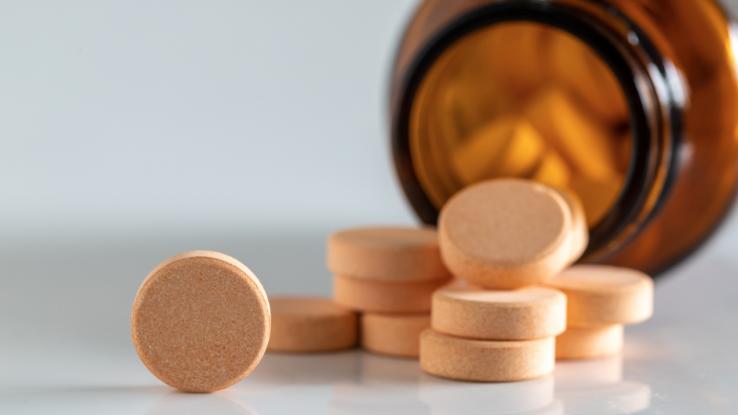Places To Get Testosterone Checked Clinically
Testosterone levels naturally decline with age in males. Some health professionals claim that a clinical syndrome of testosterone deficiency, or andropause, is being under diagnosed, which has led to dramatic increases in testosterone prescribing and testing in many countries. Routine measurement of testosterone levels is not indicated in older males. Testing should only be considered in males who have clinically significant signs and symptoms of late-onset hypogonadism.
- Testosterone and ageing
- Testosterone deficiency in older males
- Measuring testosterone levels
- Testosterone replacement for late-onset hypogonadism in males
- References
In this article ![]()
View / Download pdf version of this article
Testosterone and ageing
Testosterone production in males is regulated by the hypothalamic-pituitary-gonadal (HPG) axis. The hypothalamus secretes gonadotropin-releasing hormone (GnRH) which causes the anterior pituitary to produce luteinising hormone (LH) and follicle stimulating hormone (FSH). LH then stimulates Leydig cells in the testes to produce testosterone. The process is controlled by a negative feedback loop, with testosterone inhibiting the frequency and amplitude of hypothalamic and anterior pituitary secretions. The majority of testosterone is inactivated in the liver and excreted by the kidneys, approximately 4% is converted to dihydrotestosterone via a reductase enzyme and 0.2% to oestradiol via the enzyme aromatase.1
Testosterone levels in males decline at the rate of approximately 1% per year from age forty years.2 Interpretation of the clinical significance of this is controversial. Some health professionals (predominantly in North America) claim that a clinical syndrome, referred to as "andropause", is being under diagnosed. Conversely, other health professionals describe this age-related decline in testosterone as merely a barometer of natural ageing. There is therefore no consensus on the prevalence of clinically significant testosterone deficiency in the older male population.
The two schools of thought have also resulted in discrepancies in prescribing practice in different countries. Between 1994 and 2003, testosterone prescription sales in the United States increased by 1700%, while remaining relatively constant in Europe.3,4 Increases in the volume of testosterone prescriptions have been recently reported in Australia,5 however, this trend is not apparent in New Zealand.
Significant increases in the volume of testosterone prescribed means a similar increase in laboratory testing of testosterone and other hormones. This article provides guidance on when it is appropriate to investigate suspected late-onset hypogonadism in males aged over 40 years.
"Andropause" and disease mongering
Recent articles in the Medical Journal of Australia suggest that testosterone is being over prescribed in Australia due to successful marketing by pharmaceutical companies.6,7
From 1992 - 2010 the volume of testosterone prescribed per month in Australia increased by 1.5 to 4.3 times (depending on the State).5 It was concluded that improved diagnosis of testosterone deficiency is unlikely to account for the majority of this increase and that it is more likely that it is being driven by the use of testosterone for non-approved indications, such as "andropause" and male sexual dysfunction.
Testosterone deficiency in older males
Testosterone deficiency that occurs in association with advancing age is termed late-onset hypogonadism. The symptoms of late-onset hypogonadism (Table 1) are often non-specific, with a weak overall association with testosterone levels.8 A 2010 study of over 3000 males aged 40 to 79 years found that the combined sexual symptoms of poor morning erection, low sexual desire and erectile dysfunction (inability to achieve or maintain penile erection sufficient for satisfactory sexual performance) were useful in diagnosing testosterone deficiency, in combination with laboratory testing of testosterone levels.8
| Table 1: Signs and symptoms associated with testosterone deficiency in males9 | |
| More specific | Less specific |
| Decreased or absent early morning erection Reduced libido Erectile dysfunction Breast discomfort, gynaecomastia Loss of facial, axillary and pubic hair Testicular atrophy Infertility Height loss, low velocity fractures, low bone mineral density Hot flushes, sweats | Decreased energy, motivation and confidence (vitality) Depressed mood Poor concentration and memory Sleep disturbance and increased sleepiness Mild anaemia Reduced muscle bulk and strength Increased body fat Decreased physical performance |
| N.B. All of these signs and symptoms can be indicative of causes other than hypogonadism. Signs and symptoms should be interpreted in the context of the entire clinical picture. | |
Primary and secondary hypogonadism
Late-onset hypogonadism can result from primary or secondary causes, which can be due to congenital abnormalities or acquired disease. In some cases, both primary and secondary causes are present, particularly in people with long-term systemic diseases such as chronic kidney disease, cirrhosis or chronic lung disease.
Primary hypogonadism is when there is decreased testosterone production due to a testicular abnormality. This may occur, for example, after infection or chemotherapy and in a small percentage of males with advancing age. Primary hypogonadism is characterised by elevated LH due to the reduced negative feedback effect of testosterone.
Secondary hypogonadism results from disorders of the hypothalamic-pituitary axis, e.g. tumours, or congenital or genetic conditions. Secondary hypogonadism is characterised by low, or lower than expected, serum LH levels in combination with low testosterone levels.
Free, bio-available and total testosterone
Only 1 - 2% of circulating testosterone is not bound to protein. This fraction is termed free testosterone.11 Approximately 40 - 50% of circulating testosterone is weakly bound to albumin.11 The free and albumin-bound testosterone is referred to as bio-available. The remaining testosterone in circulation is strongly bound to SHBG. The amount of SHBG in circulation therefore influences the amount of bio-available testosterone. SHBG can be altered by factors such as age, hepatic cirrhosis and hepatitis, hyperthyroidism, obesity and the use of anticonvulsants.9 Total testosterone refers to circulating, bio-available and SHBG-bound testosterone.
Measuring testosterone levels
Measurement of total serum testosterone (see panel opposite) is generally sufficient to diagnose testosterone deficiency. Assays which directly measure free testosterone are not recommended due to poor reliability, although free testosterone can be calculated through additional testing in rare cases where unusually high or low sex hormone-binding globulin (SHBG) levels may be expected, e.g. patients with hyperthyroidism, cirrhosis or taking anticonvulsants.10
Who should be considered for testing?
Testosterone testing should only be considered for males who display symptoms and signs clinically suggestive of hypogonadism. Routine testosterone testing in older males is not recommended, as the results in the absence of symptoms are unlikely to influence management.
Before considering investigating for late-onset hypo-gonadism, rule out factors that can cause a transitory drop in testosterone levels and may explain the current symptoms. This includes co-existing acute or chronic illness, long-term use of medicines, e.g. opioids or corticosteroids, high alcohol intake, illicit drug use, eating disorders or excessive exercise.9
Erectile dysfunction is common in males aged over 40 years and may be a reason for patients to request a testosterone test.12 However, routine testing of testosterone levels in males with erectile dysfunction in the absence of other symptoms of late-onset hypogonadism is not recommended.13 Although late-onset hypogonadism and erectile dysfunction both become more common with age (and will often co-exist), the two disorders have distinct pathophysiology and erectile dysfunction is only rarely ever caused by low testosterone levels.9 Erectile dysfunction is most frequently caused by neurological or vascular disease, some medicines (e.g. antidepressants or antihypertensives) or psychosexual factors.13 Testosterone treatment for erectile dysfunction is only effective (and indicated) if the cause is a testosterone deficiency.9,13
 For further information see: "Selected topics in Men's Health" Best Tests (Sept, 2010) and "Erectile dysfunction", BPJ 12 (Apr, 2008).
For further information see: "Selected topics in Men's Health" Best Tests (Sept, 2010) and "Erectile dysfunction", BPJ 12 (Apr, 2008).
Obesity in males is associated with decreased testosterone levels.14 However, testing of testosterone levels in obese males, who do not display symptoms of hypogonadism, is not recommended, as treatment in the absence of symptoms is unlikely to be of significant benefit. The relationship between obesity and hypogonadism is complex as low testosterone is both a cause and consequence of obesity.15
Investigating testosterone concentration
Blood samples should be taken in the early morning as serum levels in males, particularly younger males, vary throughout the day, e.g. highest at 8 am and lowest at 8 pm.16 The reference range for total serum testosterone concentration in adult males differs between laboratories. An approximate range is 8 - 35 nmol/L, however, if there is doubt the reporting laboratory should be consulted. Work is currently in progress internationally to standardise testosterone assays and reference ranges.
Interpreting serum testosterone results
If a single early morning testosterone level is within the reference range then no further testing is required.
Testosterone levels below the reference range should be considered in the context of the patient's symptoms. Low testosterone levels require at least one repeat test, as 30% of males with a mildly subnormal level will have a normal level when the test is repeated.17 Acute illness or recent alcohol intake can also affect testosterone levels.
The level of testosterone below which adverse health outcomes emerge in older men is unknown.8 However, it is generally agreed that clinically relevant symptoms and a testosterone level below 8 nmol/L are required for a diagnosis of late-onset hypogonadism.8
If a low testosterone level is detected, serum LH should be measured, along with the confirmatory testosterone test. Serum LH and FSH can be used to distinguish primary from secondary hypogonadism. However, unless fertility is an issue, measurement of LH levels alone is sufficient.15 LH and testosterone levels can be interpreted as follows:
- Primary hypogonadism is suggested by elevated LH levels and a consistently low or borderline testosterone level.
- N.B. the testosterone reference range is population based, therefore for some individuals the serum testosterone may fall within the reference range, but is low for them - as revealed by the high LH.
- Secondary hypogonadism is suggested by low LH or an inappropriately normal LH in the context of consistently low testosterone levels
- Low LH with a clearly normal testosterone level suggests significant illness or exogenous supplementation
Where secondary hypogonadism is suspected, a serum prolactin test should be requested as prolactinoma is a common type of pituitary tumour, which may be the cause of secondary hypogonadism.
All patients with suspected hypogonadism should be referred to an endocrinologist to confirm the diagnosis and to discuss treatment options. In patients with suspected secondary hypogonadism, assessment for anterior pituitary dysfunction and MRI may be considered to exclude the possibility of pituitary tumours.9 Testosterone replacement should not be commenced until assessment has taken place, as treatment is likely to suppress endogenous production of testosterone and alter any subsequent testosterone measurement.
Testosterone replacement for late-onset hypogonadism in males
A three month trial of testosterone replacement may be considered in patients with clinically significant symptoms of hypogonadism and reproducible biochemical evidence of a testosterone deficiency, following a detailed discussion of the risks and benefits of treatment.9 It is recommended that testosterone is initiated in consultation with an endocrinologist. Testosterone replacement treatment for hypogonadism is likely to be life-long if it provides benefit to the patient (after the treatment trial).
Before testosterone treatment is commenced a clinical history of prostate symptoms should be taken, a digital rectal examination of the prostate conducted and PSA and full blood count (to assess haematocrit) requested.
Testosterone replacement is generally not appropriate for males who have:9
- Diagnosed prostate or breast cancer
- Palpable prostate nodule or induration, or PSA > 4 ug/L (> 3 ug/L in males with an elevated risk of prostate cancer, e.g. first-degree relative with prostate cancer)
- Severe lower urinary tract symptoms associated with benign prostatic hypertrophy
- An elevated haematocrit (> 50%)
- Untreated severe sleep apnoea
- Poorly controlled heart failure
There is no convincing evidence that testosterone treatment is causally associated with the development of new prostate cancer, however, occult prostate cancer should be actively excluded before treatment begins.
Testosterone should not be prescribed to males who wish to conceive or to treat male infertility. Testosterone within the testes is required for spermatogenesis, however, exogenous testosterone will decrease sperm production through the negative feedback effect of testosterone on gonadotropins.9
Testosterone replacement treatment is not indicated for males with testosterone levels which are intermittently low, or with low levels caused by medicines or lifestyle factors (e.g. drug or alcohol misuse, excessive exercise).9
The most significant adverse effects associated with testosterone treatment are prostatic hypertrophy and polycythaemia, which may occur within three months of treatment initiation.9,18 Mild hyperbilirubinaemia has also been reported.
Evidence of adverse effects associated with testosterone replacement
A 2010 meta-analysis of studies of adult men with low testosterone levels found that testosterone treatment was associated with a three-fold increase in the risk of polycythaemia and small, but significant reductions in HDL cholesterol.19 However, the same analysis did not find significant effects on all-cause mortality, prostatic or urological outcomes or cardiovascular events. In contrast, the Testosterone in Older Men with Mobility Limitations (TOM) trial found significantly increased cardiovascular-related adverse effects in 23 of 106 men receiving testosterone treatment, compared to six of 103 receiving placebo. This resulted in the trial being halted early. However, this study has been criticised for its small sample size and the potentially elevated cardiovascular risk of participants at baseline.
Androgen misuse
Unexpected testosterone, LH, FSH and SHBG levels can result from illicit use of androgens ("anabolic steroids"). Classic symptoms include truncal acne, excessive muscularity, testicular atrophy and gynaecomastia, usually in association with obsessive and intense exercise regimens. Consider asking specific questions regarding androgen misuse to males who display these behaviours and signs. Males who are currently using androgens may have elevated testosterone and suppressed LH, FSH and SHBG. Suppression of testosterone as well as LH, FSH and SHBG can indicate a recent history of androgen misuse.4 The rate of recovery from HPG axis suppression is dependent on the duration and severity of the misuse, but will generally occur within 12 months after cessation of androgens.4
Prescribing testosterone
In New Zealand, testosterone is available in the following forms:
- Orally as testosterone undecanoate, e.g. initially 120 - 160 mg daily for two to three weeks, followed by a maintenance dose of 40 - 120 mg daily.20 This preparation is poorly absorbed and should be taken in divided doses with food. Depending on baseline testosterone levels, treatment may be started at a lower dose to reduce the risk of adverse effects.
- Testosterone patches, e.g. two 2.5 mg/day patches applied before bed.21 This often causes local skin irritation and can be poorly tolerated.
- Injectable (intramuscular) - either long-acting testosterone cypionate or testosterone esters, e.g. 50 - 400 mg testosterone cypionate every two to four weeks.22 Reandron is a very long-acting injectable form of testosterone undecanoate, which has the advantage of 10 - 12 weekly administration, but is not subsidised.
Prescriptions for oral and injectable testosterone require consultation with and recommendation from an endocrinologist (or other relevant specialist) in order to be subsidised. Testosterone patches are fully-subsidised, without restriction. However, it is recommended that any testosterone preparations are prescribed in consultation with an endocrinologist.
Follow-up is recommended after three months in order to assess the effect of treatment, ask about adverse effects and alter the dose if necessary.
Testosterone replacement treatment, particularly injections, can be associated with a placebo effect, therefore a second follow-up three months later is recommended to ensure that any benefits of treatment are sustained.
Within the first three to six months of treatment, a PSA test and a digital prostate examination should occur. This should be repeated annually if treatment continues.15 If the PSA is significantly elevated then discussion with an urologist is recommended.
The role of testosterone measurement in patients on testosterone treatment is not clear. Routine monitoring of testosterone levels is not required. However, in patients using injectable preparations, it may be useful to determine their trough level immediately prior to administering their next dose. The target testosterone concentration is in the mid-normal range. For example a concentration of 14 to 24 nmol/L is recommended for patients receiving testosterone cypionate injections.9
ACKNOWLEDGEMENT: Thank you to Dr Cam Kyle, Clinical Director of Biochemistry and Immunology, Diagnostic Medlab, Auckland and Associate Professor Geoff Braatvedt, Physician and Endocrinologist, Department of Medicine, University of Auckland for expert guidance in developing this article
References
- Allan CA, McLachlan RI. Testosterone deficiency in men. Diagnosis and management. Aust Fam Physician 2003;32(6):422-7.
- Feldman HA, Longcope C, Derby CA, et al. Age trends in the level of serum testosterone and other hormones in middle-aged men: longitudinal results from the Massachusetts male aging study. J Clin Endocrinol Metab 2002;87(2):589-98.
- Bhasin S, Singh AB, Mac RP, et al. Managing the risks of prostate disease during testosterone replacement therapy in older men: recommendations for a standardized monitoring plan. J Androl 2003;24(3):299-311.
- Handelsman DJ. Androgen misuse and abuse. Best Pract Res Clin Endocrinol Metab 2011;25(2):377-89.
- Handelsman DJ. Pharmacoepidemiology of testosterone prescribing in Australia, 1992-2010. Med J Aust 2012;196(10):642-5.
- Katelaris A. Testosterone up. A case of disease mongering? Med J Aust 2012;196(10):611.
- Vitry AI, Mintzes B. Disease mongering and low testosterone in men: the tale of two regulatory failures. Med J Aust 2012;196(10):619-21.
- Wu FCW, Tajar A, Beynon JM, et al. Identification of late-onset hypogonadism in middle-aged and elderly men. N Engl J Med 2010;363(2):123-35.
- The Endocrine Society. Testosterone therapy in adult men with androgen deficiency syndromes: An Endocrine Society clinical practice guideline. J Clin Endocrinol Metab 2010;95(6):2536-59.
- Editor: Kyle C. A handbook for the interpretation of laboratory tests. 4th ed. Diagnostic Medlab; 2008.
- Kaufman JM, Vermeulen A. The decline of androgen levels in elderly men and its clinical and therapeutic implications. Endocr Rev 2005;26(6):833-76.
- Feldman HA, Goldstein I, Hatzichristou DG, et al. Impotence and its medical and psychosocial correlates: results of the Massachusetts Male Aging Study. J Urol 1994;151(1):54-61.
- Jack G, Zeitlin SI. The role of routine serum testosterone testing: routine hormone analysis is not indicated as an initial screening test in the evaluation of erectile dysfunction. Rev Urol 2004;6(4):203-6.
- Mulligan T, Frick MF, Zuraw QC, et al. Prevalence of hypogonadism in males aged at least 45 years: the HIM study. Int J Clin Pract 2006;60(7):762-9.
- Dandona P, Rosenberg MT. A practical guide to male hypogonadism in the primary care setting. Int J Clin Pract 2010;64(6):682-96.
- Bremner WJ, Vitiello MV, Prinz PN. Loss of circadian rhythmicity in blood testosterone levels with aging in normal men. J Clin Endocrinol Metab 1983;56(6):1278-81.
- Brambilla DJ, O'Donnell AB, Matsumoto AM, McKinlay J. Intraindividual variation in levels of serum testosterone and other reproductive and adrenal hormones in men. Clin Endocrinol (Oxf) 2007;67(6):853-62.
- Snyder PJ, Peachey H, Berlin JA, et al. Effects of testosterone replacement in hypogonadal men. J Clin Endocrinol Metab 2000;85(8):2670-7.
- Fernández-Balsells MM, Murad MH, Lane M, et al. Clinical review 1: Adverse effects of testosterone therapy in adult men: a systematic review and meta-analysis. J Clin Endocrinol Metab 2010;95(6):2560-75.
- Arrow Pharmaceuticals Limited. Testosterone - Medicine data sheet. 2010. Available from: www.medsafe.govt.nz (Accessed Jun, 2012).
- Hospira NZ Limited. Androderm. 2009. Available from: www.medsafe.govt.nz (Accessed Jun, 2012).
- Pfizer New Zealand Ltd. Depo Testosterone: Testosterone cypinoate injection. 2011. Available from: www.medsafe.govt.nz (Accessed Jun, 2012).
Places To Get Testosterone Checked Clinically
Source: https://bpac.org.nz/BT/2012/June/06_testosterone.aspx























